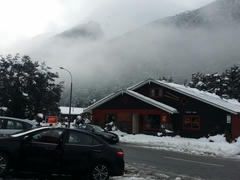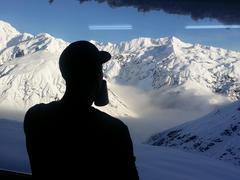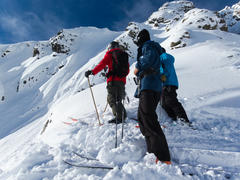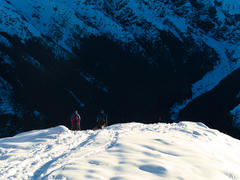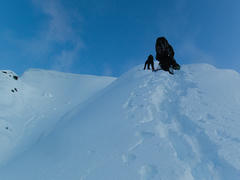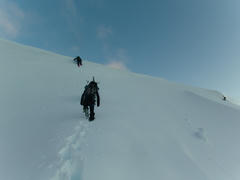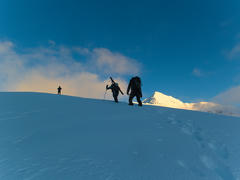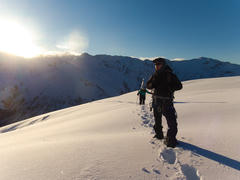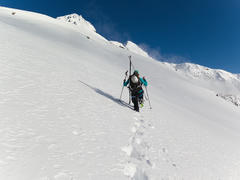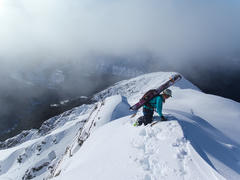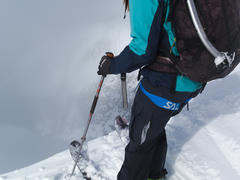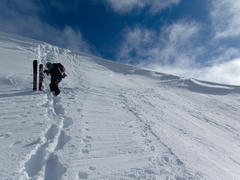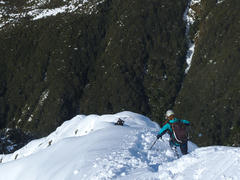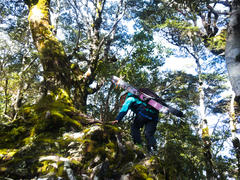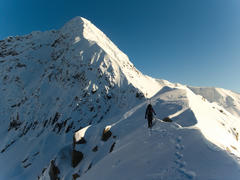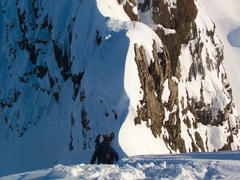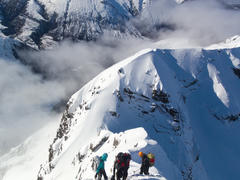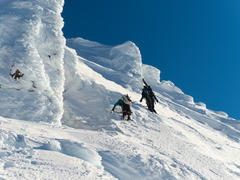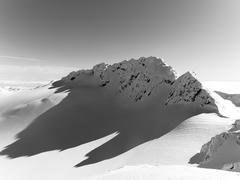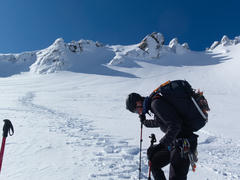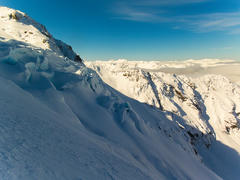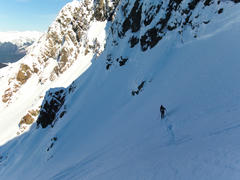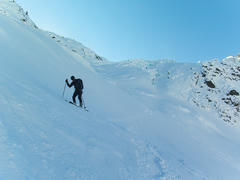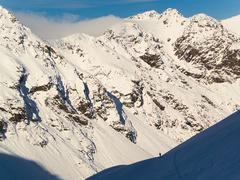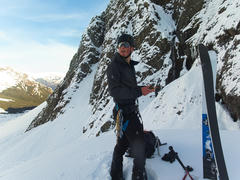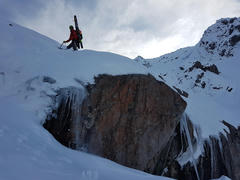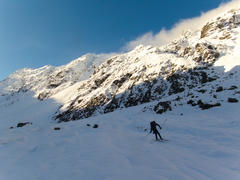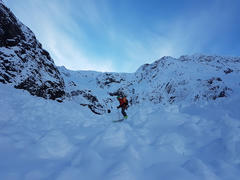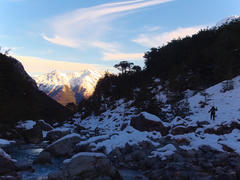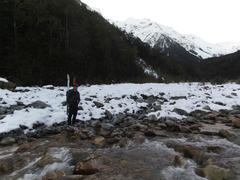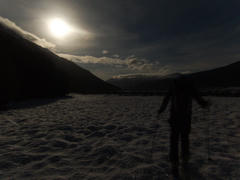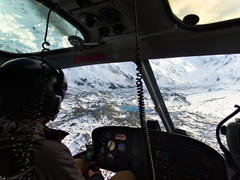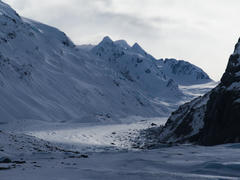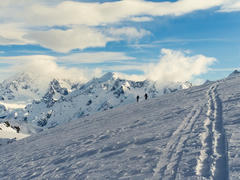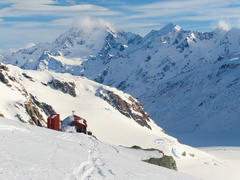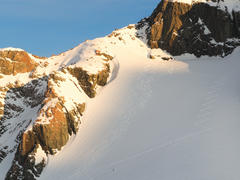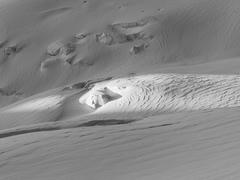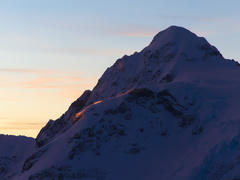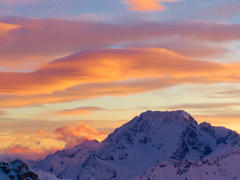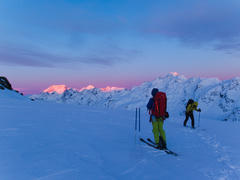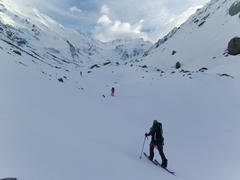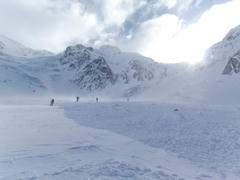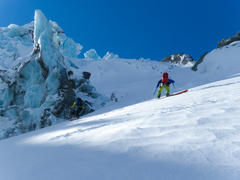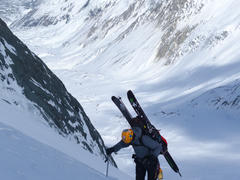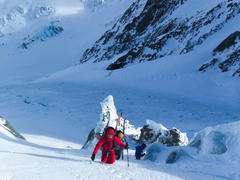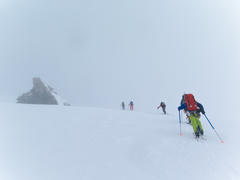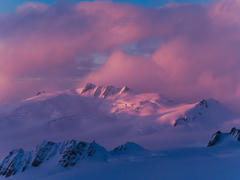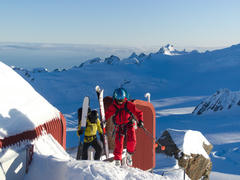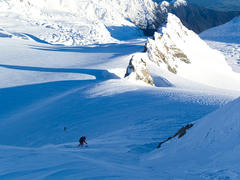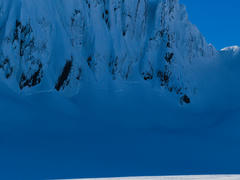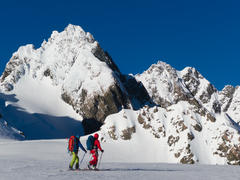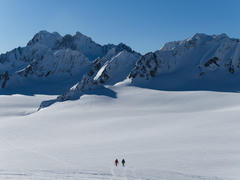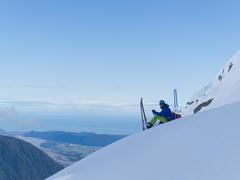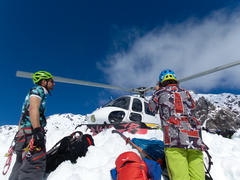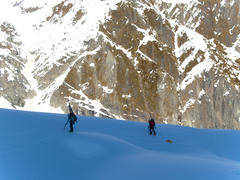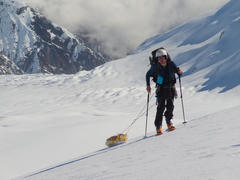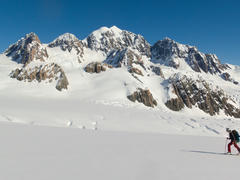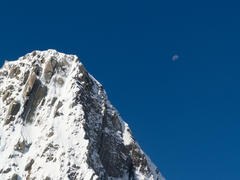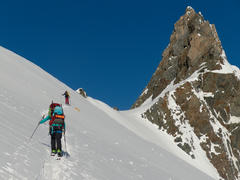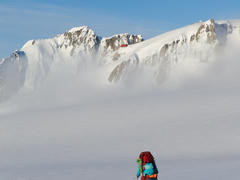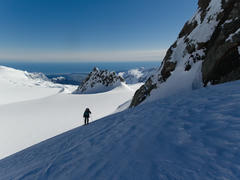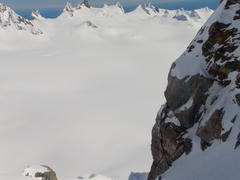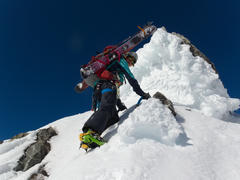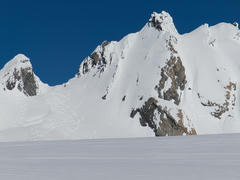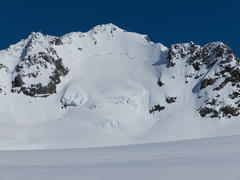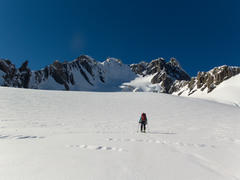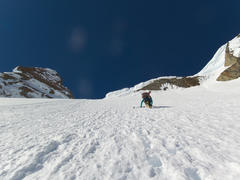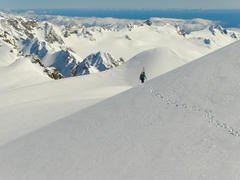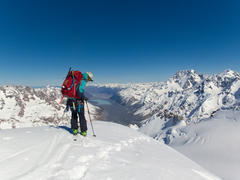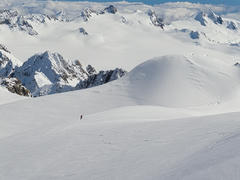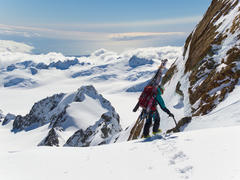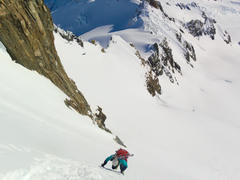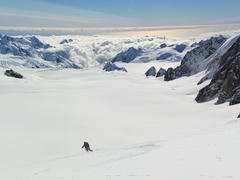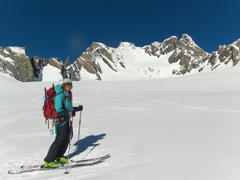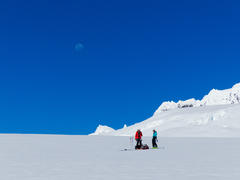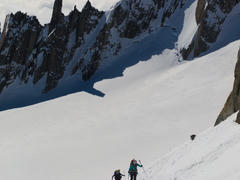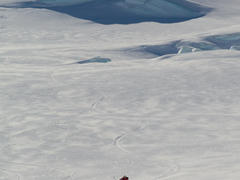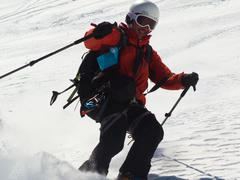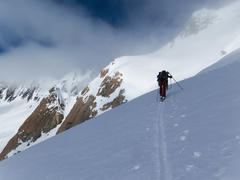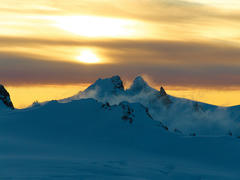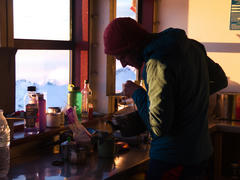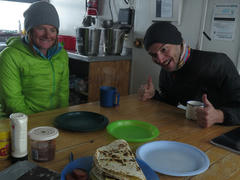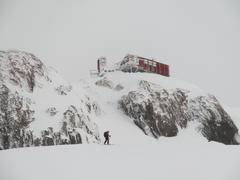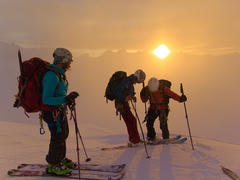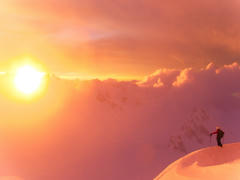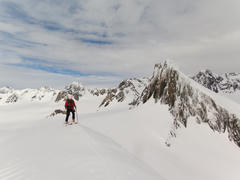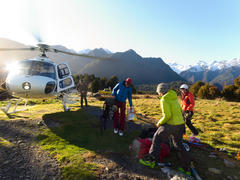The past couple of years I have set a personal goal for myself, to work towards the prerequisites for the New Zealand Mountain Guides Association (NZMGA) ski guiding course. With encouragement from mentors, and inspiration from Stuart Hollaway who completed his IFMGA qualification (NZMGA ski guide + NZMGA climbing guide) all while working as an English teacher at a school in Melbourne, I decided to start down the long and challenging journey of becoming a qualified guide, while continuing to work in the field of software engineering, where my passion also lives.
In that time, the prerequisites for the course changed and the bar was raised higher, however, the prerequisites continue to serve as yet another excuse to get out on adventure. They are ample encouragement to extend yourself and your abilities as a skier and as a competent decision maker in serious mountain terrain.
And so it was that I needed to make a return to New Zealand for a second Winter season, to gain experience skiing in glaciated terrain and on the bigger mountains. I also planned to complete the entry level professional avalanche course. Thinking to hit two birds with one stone I applied for a couple of months off work, which was very kindly granted, and began carefully planning for the trip.
Ski Partners
One of the most difficult things to overcome in acheiving the prerequisites for the NZMGA courses (or just ski mountaineering in general) is finding reliable and quality partners for your trips. It appears that some guides end up completing a number of trips by themselves due to lack of partners. I like the margin of safety that having at least one partner provides in the event of an emergency, and having an extra head involved in decisions and discussions. I want to try and avoid solo trips where possible. Having someone to share the experience with and take photos of makes the whole thing a lot more fun for me.
Finding people who can both ski and climb, have a similar fitness, want to complete similar objectives, and have a similar approach to risk management to yourself is extremely difficult, and almost impossible. Personally, along with the usual criteria, I try to look for partners who are happy to talk about the conditions and options before a trip, are active in having difficult discussions about decisions during a trip, and are willing to have a quality debrief after the trip.
Mt Rolleston
Without having planned it, I happened to be on the same overnight flight to Christchurch as my friend Sam Thompson. He was on a two week holiday, with no solid plans for the first week, but plenty of equipment for canyoning, skiing and caving! We decided to return to Temple Basin together, the land of the nutcracker and exciting terrain for the start of our trip.
We made it up the hill to the lodge in the evening and cooked our dinner after the catered meal was prepared and the kitchen was free. It's great that we can cook our own meals here!
In the morning, it was perfect weather, and the word was that today the Temple Tow (or Uphill Tow?) would be extracted from the avalanche debris from the previous storm and there would be some great snow on offer. I dug some pits on a north aspect to see how the snowpack was doing for a potential Mt Rolleston Otira Slide trip later in the week, it was not yet fully stable, but with plenty of assistance warming from the sun ongoing, it was looking promising.
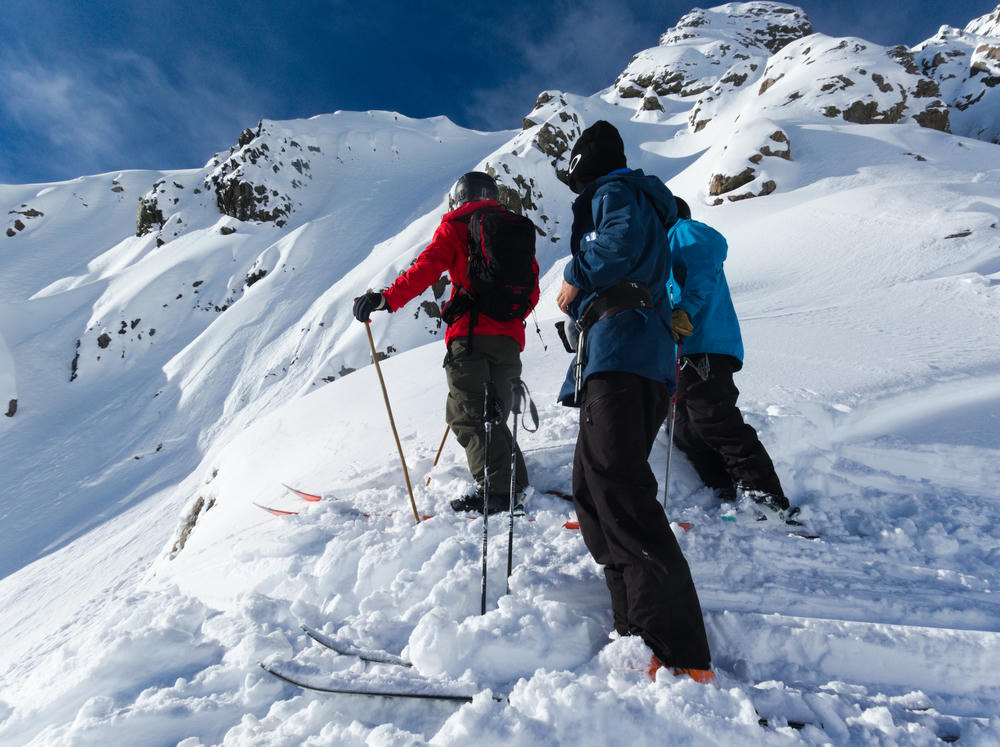
In the afternoon everyone worked together to dig out the path between the two main rope tows, and by the time we had finished, the upper tow was repaired. By all accounts, it was an amazing day. Towards the end of the afternoon, the sun was baking the North aspects, and triggered a loose wet avalanche and a bunch of alarmingly large pinwheels onto the ski slope, luckily not taking anyone out. The patrol announced that they would have to stop soon, and hilariously many who had been chilling out at the bottom jumped on the tow to get to the top before closure.
That evening, we returned to Athurs Pass and stayed at the NZAC lodge. An acquaintance Andrea (who was introduced to me by the friendly and knowledgable Joel O'Rourke) would be joining us soon for a trip up Rome Ridge the next day. We also met a fellow Australian from Brisbane, who, returning from a hike, was keen to join us for the start of the trip. Oh, and I had forgotten my head-torch up at Temple Basin!
We woke up at about 4am, and parked our cars in the little space for Rome Ridge. We were the only ones out, and after climbing through the trees for a bit, we soon discovered perhaps why. Plunging through thigh deep powder snow up a steep ridgeline between the trees with skis on your back, and phone torch in hand, isn't exactly type 1 fun! The sun had risen by the time we cleared the treeline, and a formidable wall of fresh snow confronted us. I found some extra energy somewhere and started swimming up, one step up, three steps back.
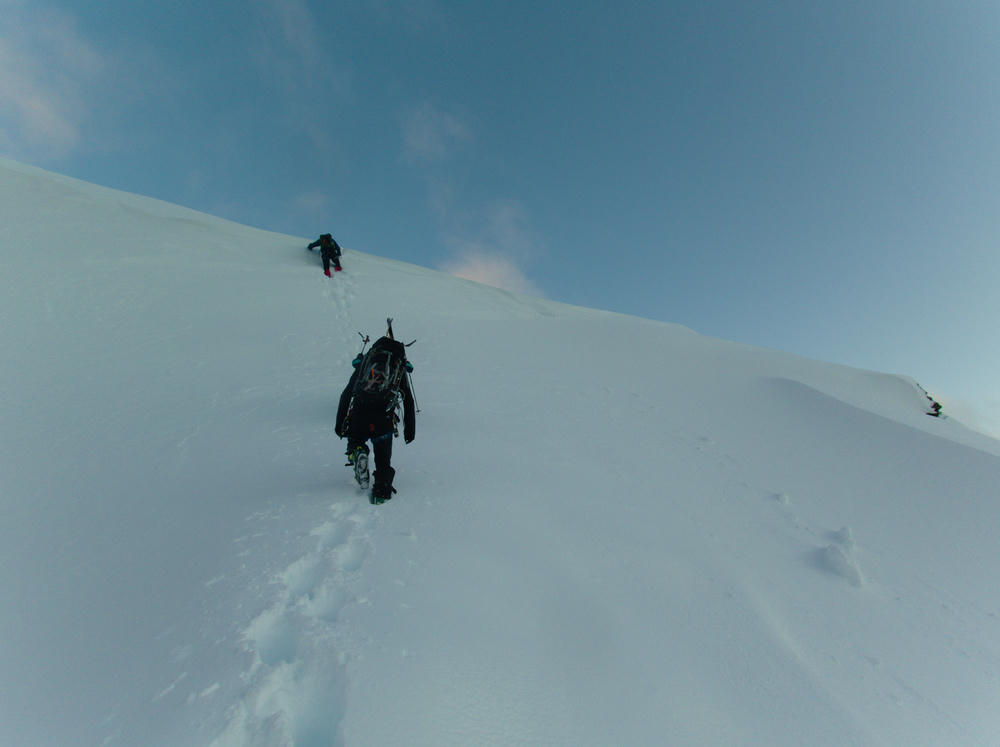
As we neared a flat section of the ridge, there were some comments on wind slab formation on the top. For some reason it didn't click in my headthat if the wind had clearly been blowing the snow onto our side (wind lip we just climbed through), then we had just been hiking up a slope which was potentially wind slab prone (albeit a small one, and mostly on a ridgeline).
Sam had decided that he wasn't going to take skis on this trip, so Andrea and I had chosen to ditch our skins in order to stick together with Sam. On the flat ridgeline, we quickly regretted that decision, plugging steps was slow going, and it was very evident that we were not going to make the summit before our turn-around time. Saying goodbye first to our fellow Aussie, and then to Sam after lunch, Andrea and I continued up while the others returned.
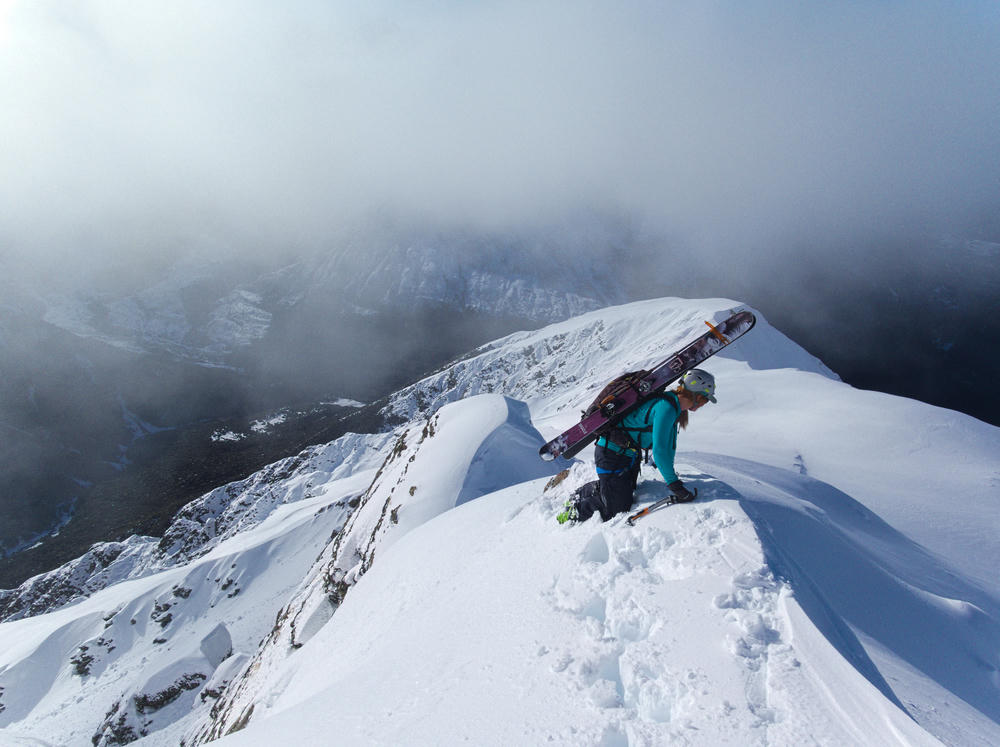
We reached a section where putting skis on and coming down seemed like the right thing to do. Interestingly, all our group discussions the previous evening about snow conditions had been for the climb up the ridge and a descent down Otira Slide. I personally wasn't all that confident in conditions on all aspects, the forecast for this area, having only just spent one day in the area, and knowing that the forecast probably only has observations from Temple Basin and an extrapolation from the Cantebury Club fields to go by. There was clearly plenty of wind slab activity on Easterly aspects visible from Temple Basin, and Temple Basin itself had received a South-Westerly? slide taking out the lift. It wasn't certain in my mind whether the two days of good weather had been enough to make things stable.
And so it was that we found ourselves dropping in to good looking snow on the South East aspect, with mainly a discussion about consequence, and little about our confidence in the conditions. After a few good turns, we returned to the ridgeline and quickly skied and bootpacked back to the flat section with the wind lip before the final steep ridge. There was some poking and a decision to do a ski cut across to the ridge. A small wind slab was triggered, which the rider cleared, we watched it tumble down the steep gully.
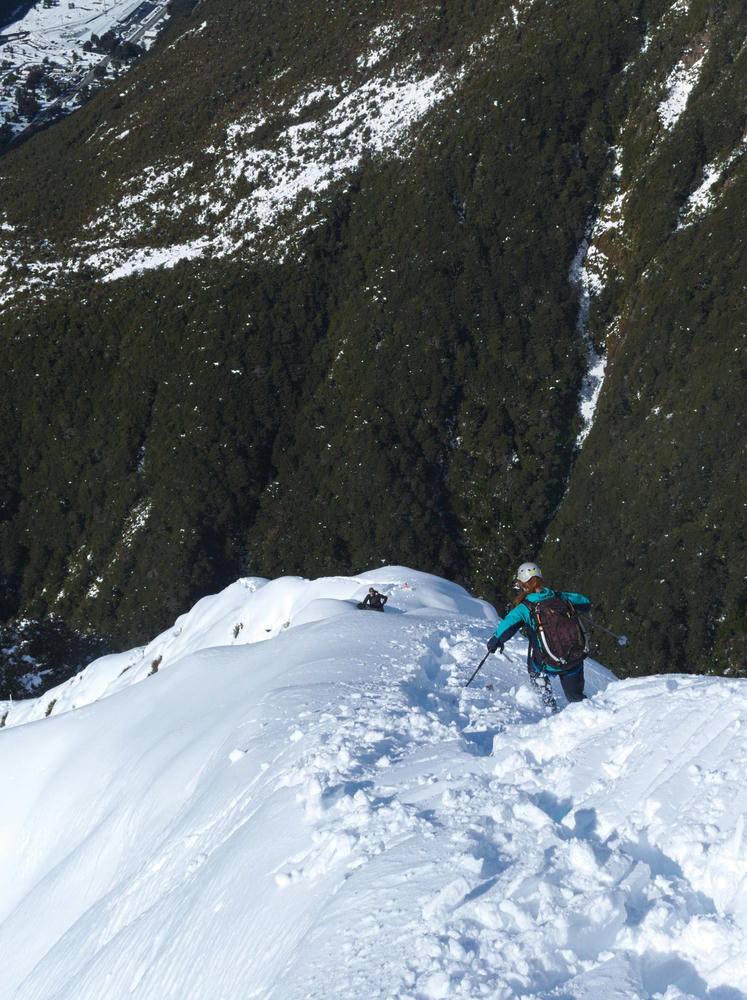
Just before the made the tree-line we caught up with Sam, and began the crazy descent, sliding down the snow, ducking under trees, and hanging onto roots, admiring the view that had been obscured in the morning darkness.
In the cafe at Athurs Pass, we had a chat about our decisions during the day, and I learned something about myself and about my partners. I'm always thankful for these discussions, for open opinions and the opportunity to learn and improve.
Back at the lodge, I was feeling wrecked, but another acquaintance, Latham arrived from Christchurch, but with much of the hard work already having been done, I was convinced to join him on another attempt the next morning. Also climbing Rolleston the next day was a group, including a beginner with his two acting teachers, very experienced climbers in their 50's or 60's.
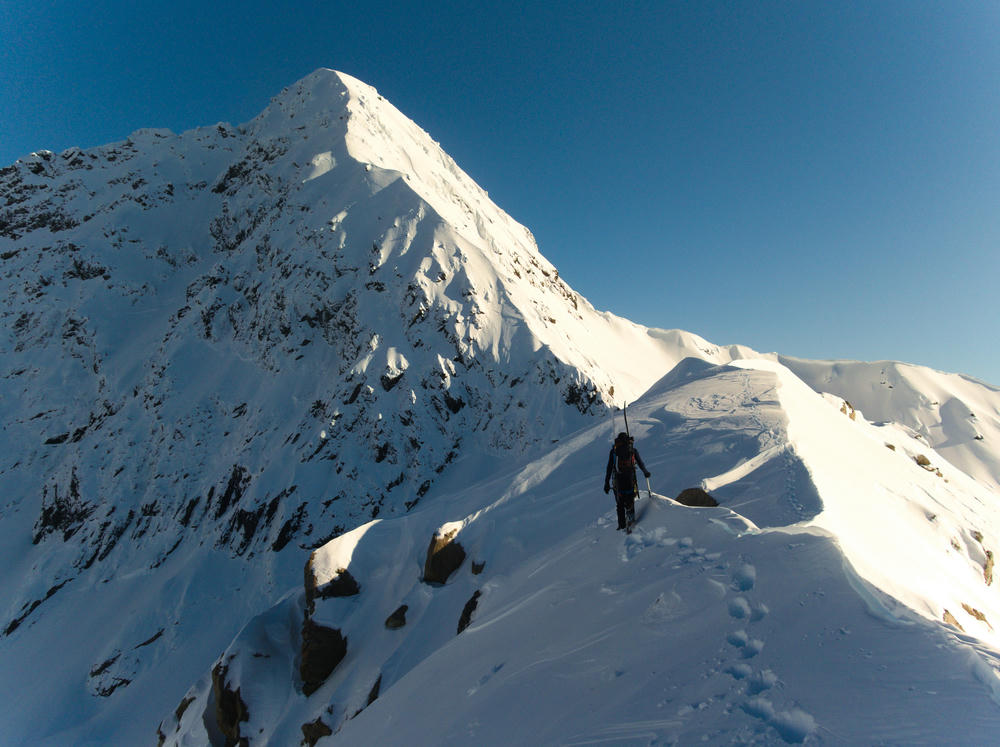
Latham and I started after the other group, and we caught up to them on the final slope/ridge to the summit. The weather was perfect. The older climbers were absolute crushers, especially the lady, who was pushing forward and plugging steps as well as I could have done the previous day. I was struggling to keep up.
Standing on top the lower peak, we glanced down the Crow Glacier, and saw that avalanches had already flushed out the slopes we needed to cross to go down that way, there had been some small discussion about this option (instead of the Otira Slide) the night before. The Glacier looked inviting, and after sending a message letting people know the change of plans, we clicked in to descend via the Crow Valley, rather than the Otira (where our second car was parked).
After a short sequence of events I watched Latham's ski ride down the middle of the glacier, and joined him he made his way to its resting place, lucky it didn't continue down the valley, thankful that we had chosen to come this way instead of Otira where the consequences would have likely been higher.
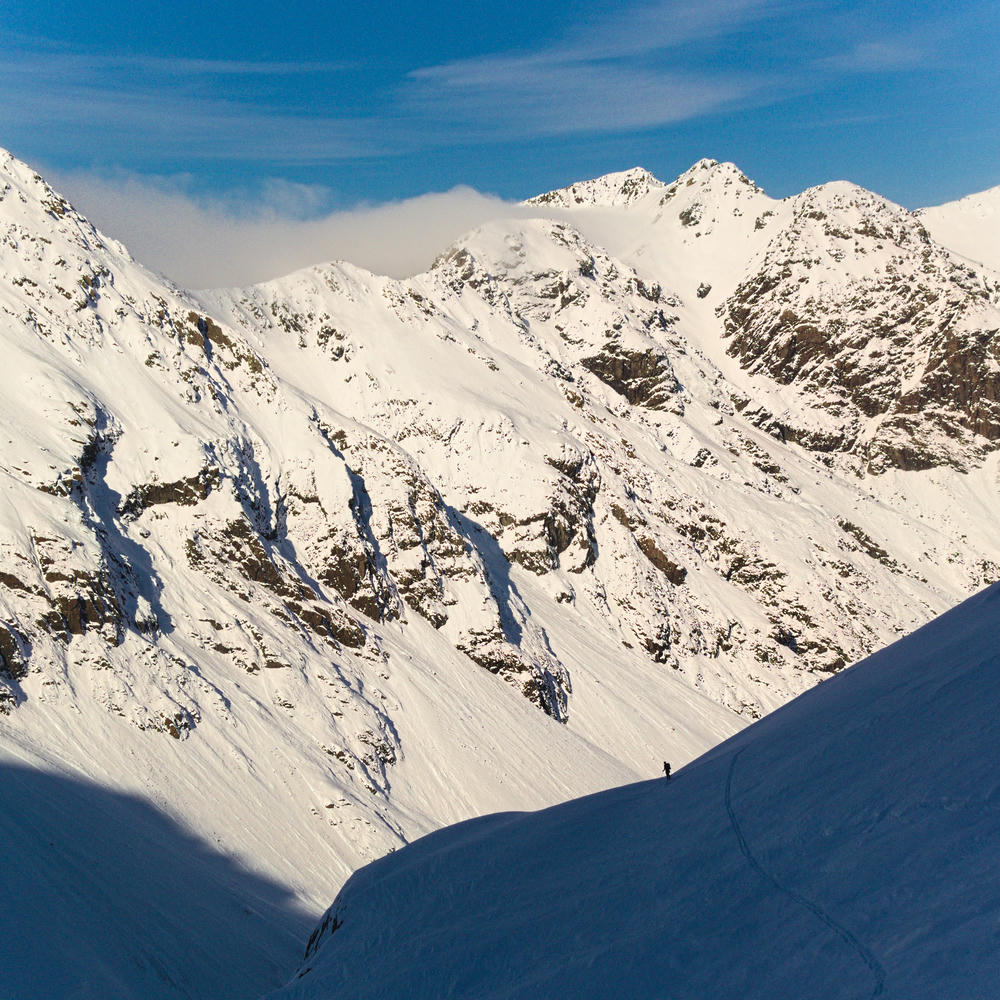
As we continued the descent, we traversed to the true right, and with seracs on our left, the glacier funnels into a couple of tight gullies. Running out of options, I decided to head down the most obvious chute, hoping that it would lead to a good exit, but instead, struck hard ice, and made the quickest transition to crampons I've ever done, quite aware of the the overhead hazard in the funnel formed by the constriction. We eventually found a different way down by climbing, and came out to the valley floor where there were some impressive size 3-3.5 avalanche debris piles.
The walk out down the Crow Valley was stunning, and I almost wish we had planned to spend a night at Crow hut so we could have taken it at a slower pace to enjoy the scenery. Crossing rivers in ski boots is interesting! The Waimakariri River Valley still had enough snow for skiing, and we made our way back to the road mostly on skis under the starlight. By the end we gave up trying to keep our feet dry and found ourselves plunging through the final crossings with sloshing boots! Some of Latham's friends, two Italians Pietro and Alessandro, and an Australian, Luke met us at the road to give us a ride back to our cars, 10pm, a 15 hour day.
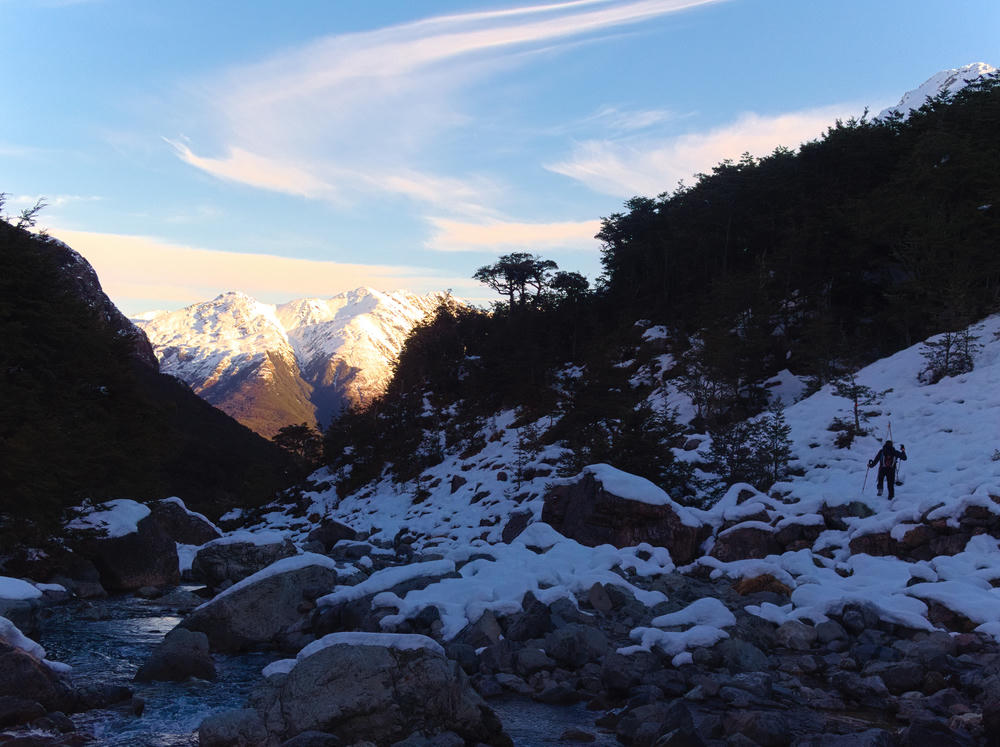
I made a short video about these trips up Rolleston:
Avalanche Risk Management Course
10 weeks before arriving in New Zealand, I began the Avalanche Risk Management Level 5 course through Otago Polytech. Our teacher for the course was Andrew Hobbman (Hobbie), who's laugh was infectious in the class, and a very friendly and knowledgable person. The online lessons were thought provoking, and required a decent amount of study to complete all the modules. It's almost shocking to learn that a similar course was previously taught in a week along with the pracical lessons and exams. I felt like the extended course made a big difference in our knowledge retention.
After Rolleston, I made a drive down the West Coast in pouring rain to begin the practical lessons and exams for the course. Our outdoor sessions were conducted up at the Treble Cone ski resort. Everyone in the class got on really well, and it was a fun experience with many like-minded people. If future guiding courses are like this, I'm sure they will be very memorable.
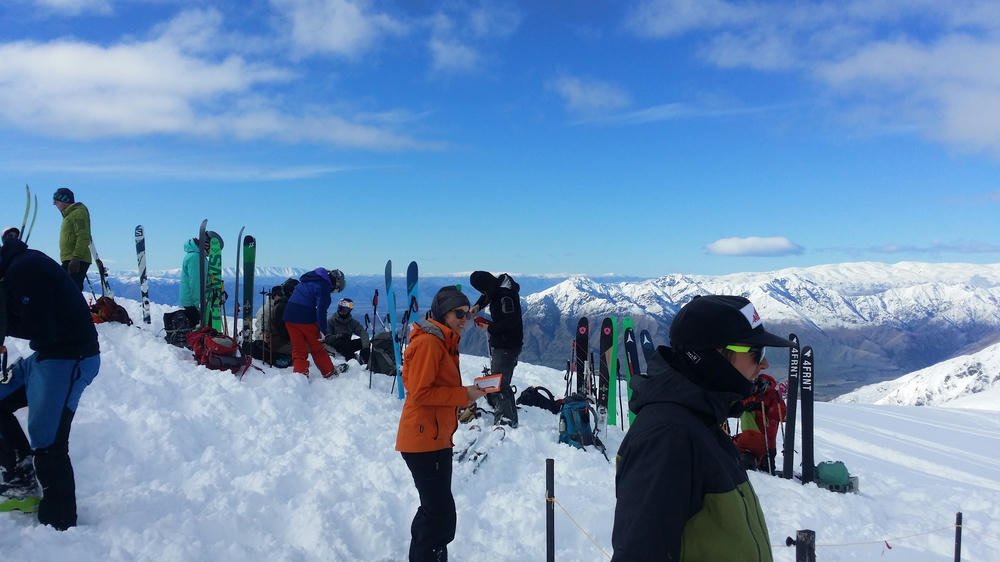
For anyone considering doing this course, I would say based on my experience that it is only really worth doing the ARM L5 if you can see yourself working in the industry, otherwise, the CAA AST2 course provides more condensed practical knowledge and more practical learning opportunities for those recreating in Avalanche terrain, it's also probably less expensive.
Symphony on Skis
While I was doing the course, plans were brewing within Latham's group to undertake the famous Symphony in Skis traverse. This route travels from the Godley Valley, over onto the Murchison Glacier, up the Murchison Headwall onto the Tasman Glacier, down the Tasman Glacier to the Rudolf Glacier, across the Franz Josef Glacier, and finally down The Fox Glacier, finishing at Chancellor Hut.
Karl who was in my course was also part of a group planning to do the route at the same time, and an idea was formed to travel the route in opposite directions in order to do a car swap and avoid several days of hassle retrieving vehicles. Latham's group would travel from the East to West, and Karl's from the West to East.
Due to timing, I was unable to join the group for the start of the trip in the Godley Valley. There was also some amount of confusion in communicating plans between the groups. I collected the food box that Latham's group left for me to bring for them up when I met them up at Tasman Saddle via helicopter a few days into their trip.
Bad weather ensured that I was stuck in Mt Cook Village for several days waiting for a flight. So I made myself useful and visited some of the guides to ask for advice about some of our planned route. In Unwin I met Mal Haskins with a group he was guiding who were staying there. He was very helpful with advice!

Eventually the clouds cleared and I set off on a flight. While I was waiting for the helicopter in the Mt Cook Airport I was shocked to receive a call from Marcus who had reception up the top of the Tasman Glacier. When I arrived, Marcus and Luke were waiting for me, with a bag of trash to back fly with the chopper. I dumped my overnight gear in Tasman Saddle Hut and we set out for a fun and cruisy afternoon skiing Aylmer and some lower slopes on Mt Annan. Back in the hut early, we waited for Latham, Pietro and Alessandro to return from their very successful adventures on Elie De Beaumont.
The next morning we made it down what could very well be the best green run on the planet, 10km of spectacular scenery sliding by down the Tasman Valley until we reached the Rudolf Glacier. At one point I became distracted by a beautiful peak and lost my balance at speed, and managed to cartwheel 3 times before coming to a stop and laughing.
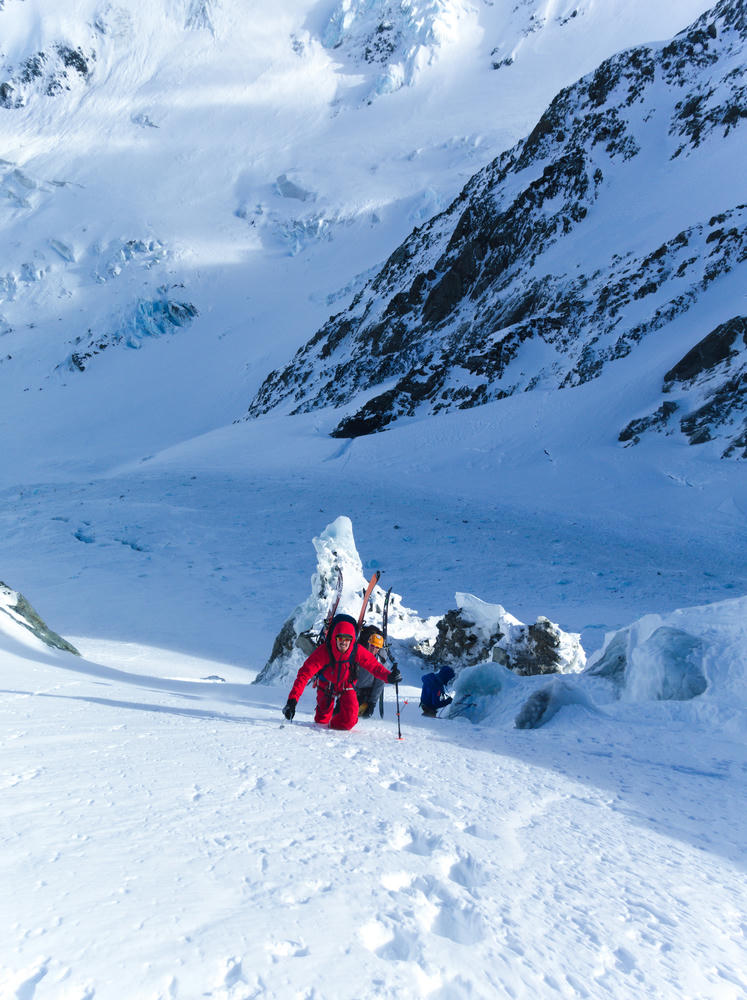
We made it all the way to the Rudolf Glacier on skis, and after a short stop began the climb up. The wind had been playing funny games with snow transport, however it didn't look like too much had collected on our intended route, and we battled through to a choke point below some Seracs, where we decided to rope up to cross a couple of Schrunds. Above this, we encountered Karl's group who had had some trouble navigating the correct entry point (a bit difficult), but were now set to begin their descent proper into the Rudolf. For some strange reason at this point I began to lose energy and was struggling to keep up with everyone, perhaps hadn't been eating enough.
Quickly eating lunch up on Graham Saddle it became evident that the descent and traverse over to Centennial Hut was going to be a wild affair. The wind was strong and the visibility was close to zero. Luckily we had the other group's tracks to help us navigate between the crevasses, but it was still difficult!
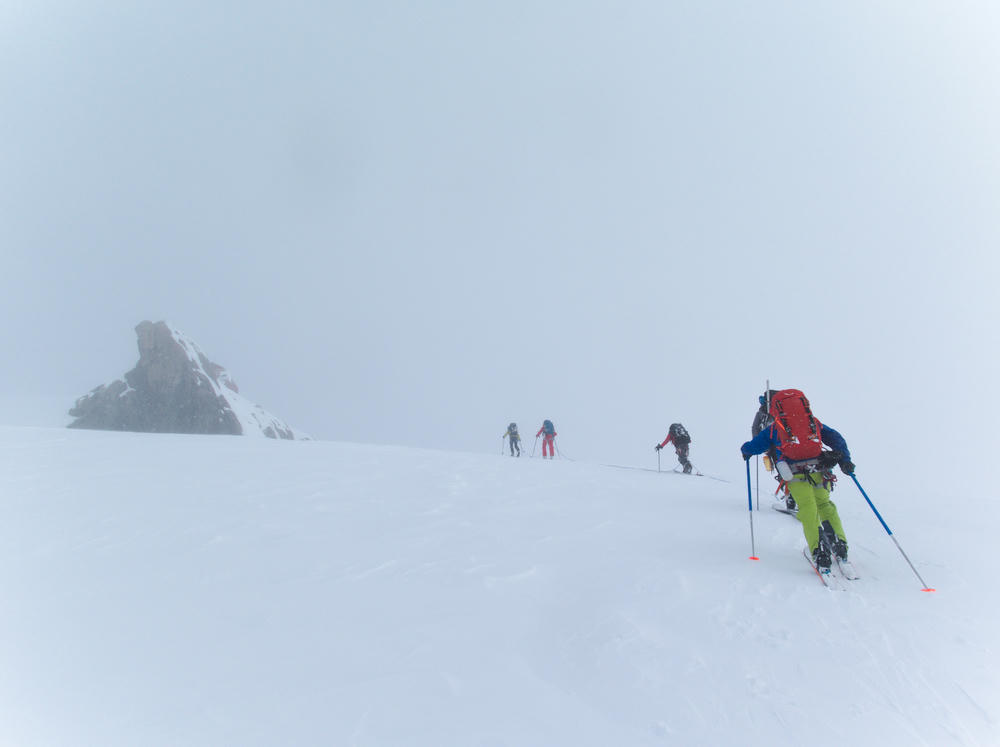
We spent the next day in Centennial Hut resting and waiting for the storm to blow over before continuing on our way over to the Fox Glacier via Newton Pass, and down towards Chancellor Hut. Snow conditions up until this point I felt I was able to collect some good quality observations, and the terrain consequences were not high, however just below Chancellor Dome, dropping into the trough on the true right side of Fox Glacier, we encountered a slope with high consequence (decent catch above and terrain trap below), on an aspect and elevation which we had not encountered much during the trip, and certainly in a different climatic location. I wanted to stop and do some more prudent checks, but by the time I had my pack down to begin digging the group had already decided to proceed without me. I kick myself now for not listening to my gut and continuing with the checks and digging a pit, I decided instead to rush on and follow the group.
After climbing the short slope above Chancellor, we put skis on again, however the snow at this point turned to ice. One member of our group took an ambitious turn in the circumstances which ended with a ride towards a precipice, just managing to stop before disappearing. That was a heart stopper!
Before long, we were down at the hut digging out the helipad with t-shirts on, I munched on snow to keep cool. When we arrived down in Fox Village, we discovered that there was only one car left to transport six of us, due to communication problems. We discussed various options, but decided to fit 4 of us, Marcus, Pietro, Alessandro and myself, in the back seat, the most uncomfortable car ride I can ever remember for 7 hours, I hope never to repeat the experience!
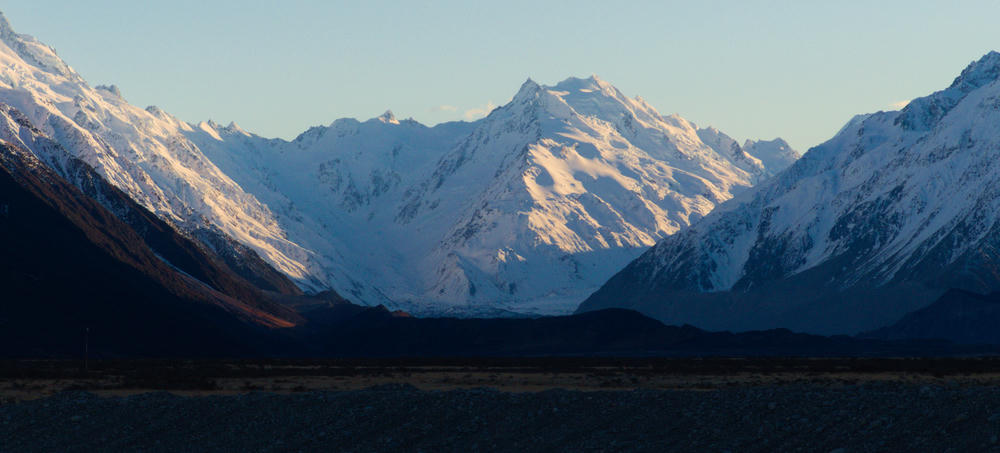
I've had a lot of time to reflect on this trip, and it will certainly go down as one of the most memorable trips for me, with many lessons learned and very I'm thankful for the invite to join in.
I made a short video about this trip here:
West Coast Glaciers
The final adventure for this trip to New Zealand was to be a tour of the Franz Josef and Fox Glaciers on the West Coast. Originally joining me were my good friends Guillaume and Jack from Melbourne, we had spent some time planning and practicing crevasse rescue before the trip, and were very excited. After Rolleston I asked Andrea if she would like to join us, as she had plenty of time, and was looking for people to do more adventures with. This made us a party of four, which worked very well, as Andrea and I were focussed on completing some ski mountaineering objectives involving a little bit of climbing, whereas Guillaume and Jack wanted to spend more time on skis.
We flew into Chancellor Hut with Fox Heliservices, and began the long trek up to Newton Pass. Just before the trip, Jack had ingeniously manufactured some plastic roll-up sleds, and they appeared to be working very well, at least on the flatter sections. Traversing and steep climbing looked a little awkward. They enabled us to take quite a bit of food and live comfortably.
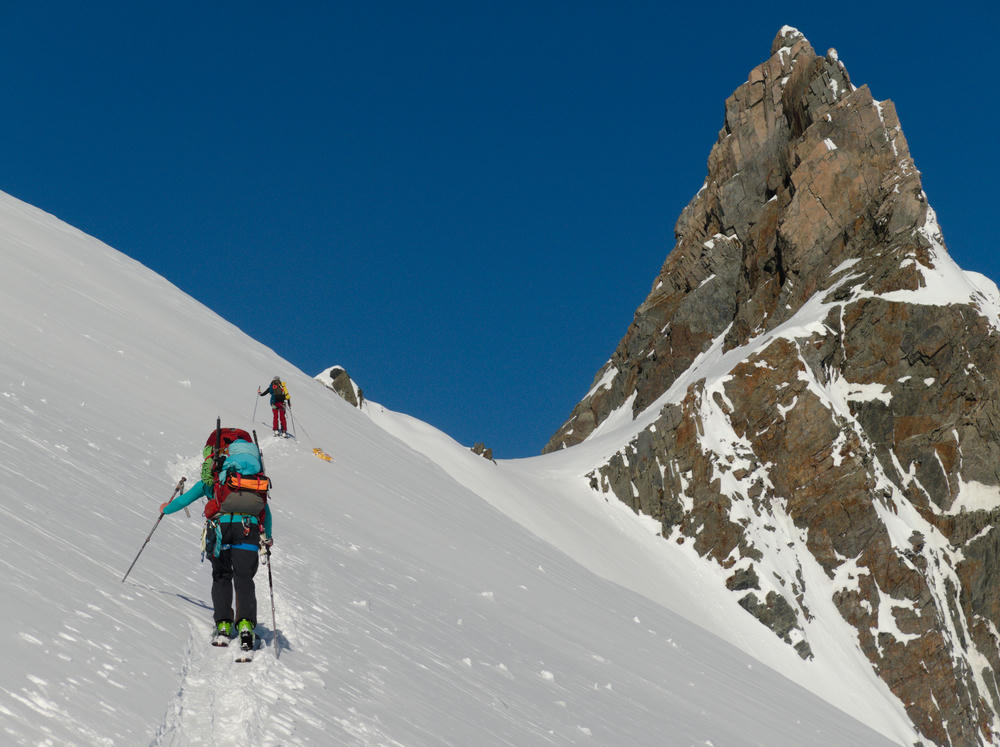
After gaining the pass in the afternoon, we skiied down onto the Franz Josef Neve, laughing along the way as Jack and Guillaume struggled to control their sleds, performing slingshot manuevers. The sun set just before reaching Centennial Hut, our destination.
Staying with us in the hut was a party of 5, with guide Jane Morris from Alpine Recreation, a party of 3 from Aspring Guides, and a party of 4 with guide Al Moore. For Guillaume and I it was quite amusing to meet Al in the place after having done an avalanche course with him as our teacher 2 years ago!
With several previous days of warm weather, and no reported persistent weak layer, things were looking optimistic for ticking off a number of objectives, with a honking big high pressure system providing us with several more days of good weather.
Day 2, we skied down from the hut together to the South, and split up. Andrea and I climbed the South-East face of Aurora, and skiied the North face. We opted to down climb a short section of ridge before dropping into the face. Andrea took a line requiring a mandatory air to clear a bergschrund, which she completed in style, I took a more conservative line further left. We got a good view of Guillaume and Jack skiing down from the Saddle just South of us.
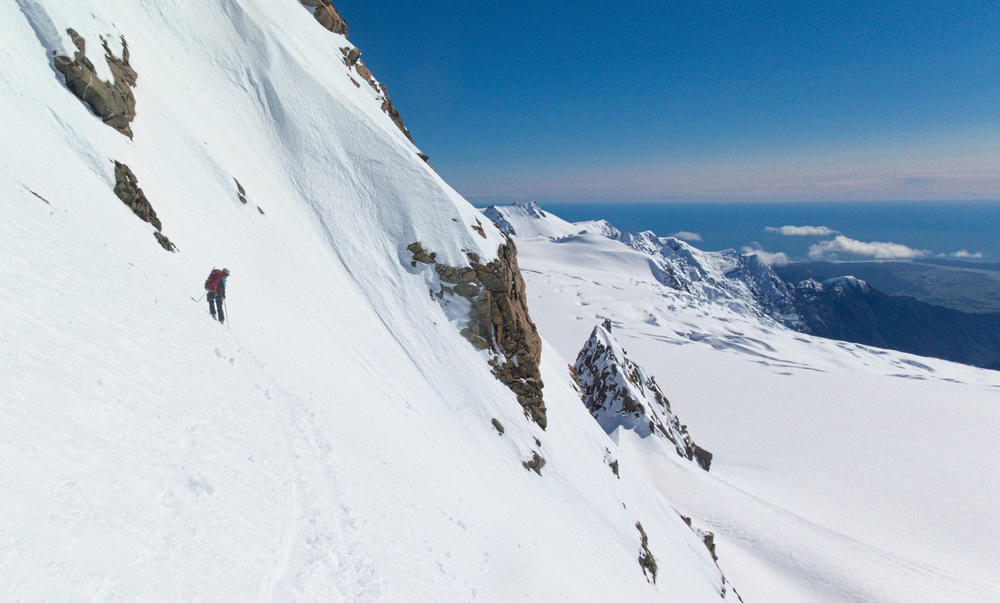
Day 3, Jane's group left to complete the Symphony, they had been waiting for the cloud out East to clear in the Rudolf. Andrea and I decided to take advantage of this final day of perfect weather to ski the Minarets, the most obvious big objective in the area. Guillaume and Jack headed on over to Drummond Peak and the Spa Glacier.
We skinned up as far as we could on the South East face of the Minarets, but eventually reached some icy crust where the ski crampon's weren't feeling so secure, so we transitioned to crampons, also knowing that we would have needed to anyway with the steepening terrain. We climbed through a bergschrund, which was filled in, but there remained a steep ice step of about 10m above it, and onto the top section of the face with breakeable and uneven crust. In my mind there was no question of skiing this section on that day.
It was just as exhilerating as the first time to reach the saddle once again, and we walked the final few hundred meters to the summit proper. The turns from the summit, with views of the entire park, East and West were unforgettable, and hardly a breath of wind. We downclimbed the top of the face and skied the rest, with the sun crust now softer and more fun to ski.

We skied all the way down to meet the others returning from their objective, and skinned back up to the hut all together.
Day 4, the hut had cleared out, and we were left to ourselves with surprisingly good weather. We decided to stay on and weather the incoming storm. A trip up to Graham Saddle and the Rudolf Glacier rewarded us with the best snow for the whole trip, still fresh and sheltered from the sun.
Day 5, the storm hit, wind blowing and shaking the hut a little, but not enough to be exciting. We were too tired to go skiing anyway, but Guillaume and Jack ventured out to practice some self arresting in front of the hut.
Day 6, still storming, but by the evening the cloud cleared, and we were gifted with the most incredible sunset I've ever seen. We did a lap down in front of the hut. Jack and Andrea found a significant amount of buried graupel from the storm, which was concerning.
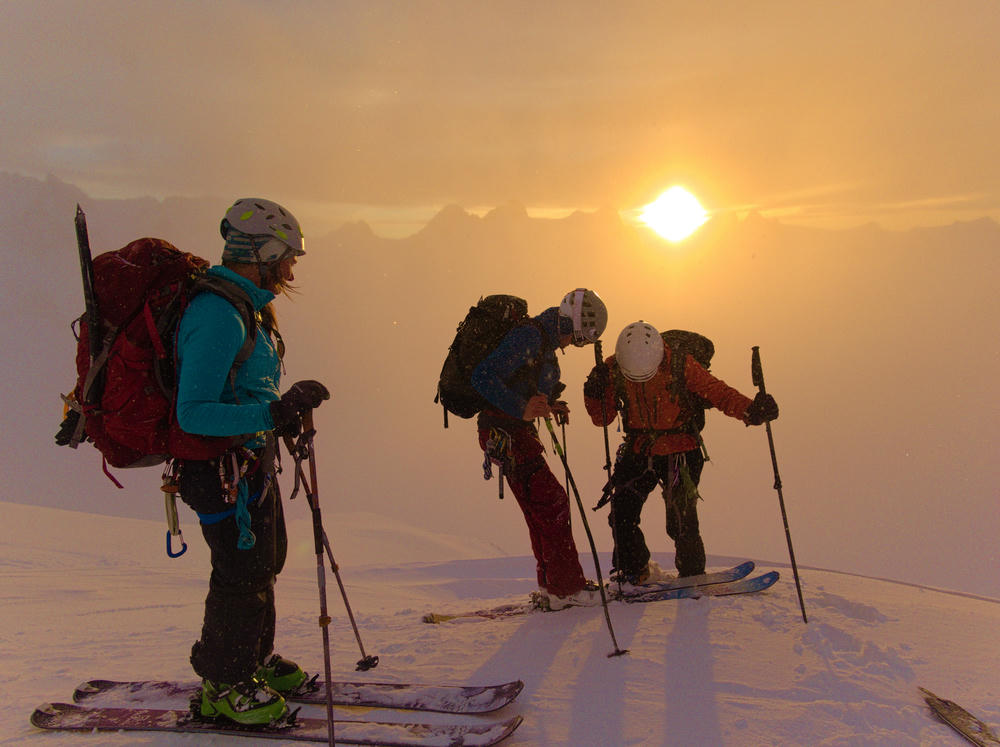
Day 7, there were questions about stability, and what had happened to the new snow, and how much new snow there had actually been. We were considering several options for our exit the next day, potenially via the Fritz Range flying from the Bauman, or over to Aylmer Hut. It's very hard to judge conditions sitting in the hut, the wind blows the snow in all directions in that location. We made some explorations in the morning, heading towards Frenchay Col. Casually strolling along the flat glacier, when, booooooom, a low pitched rumble spread out from all around me in front, my stomach dropped through my pants, it was very scary, first time hearing a proper whoomf. "Did you hear that?" a couple of the others did. It happened again, and everyone was certain what it was, a propogating failure in a weak layer of the snowpack.
We opted to avoid the potential avalanche terrain on Frenchay and instead made our way back towards Newton Pass and dug some pits on both the Northern and Southern aspects to investigate what had happened. What we discovered was worrying, propogating weak layers on both aspects. On the North Aspect we found facets under the buried sun crust, and on the south Aspect we found a crust (perhaps rime) which was also sliding on weaker snow underneath, possibly a mixture of graupel from the storm.
When we were on the South aspect just below Newton Saddle, we gathered together to inspect a pit (dug on a section of the top of the slope less than 30 degrees gradiet to be safe). The conclusion was that we were were not even happy to ski down the way we had come up from Chancellor hut. Before leaving, Jack asked Andrea to jump a couple of times just above the pit with her skis. A now familiar but extremely scary rumble and we felt the snow drop, really hit home how bad the conditions were! "God has spoken, I certainly won't be skiing this tomorrow".
Guillaume and I decided to do a routefinding excercise and head on over to the nearby Von Bulow. Sticking to low angle slopes was a challenge in the flat lighting conditions, but we managed okay, and were treated to a spectacular view over the ocean.
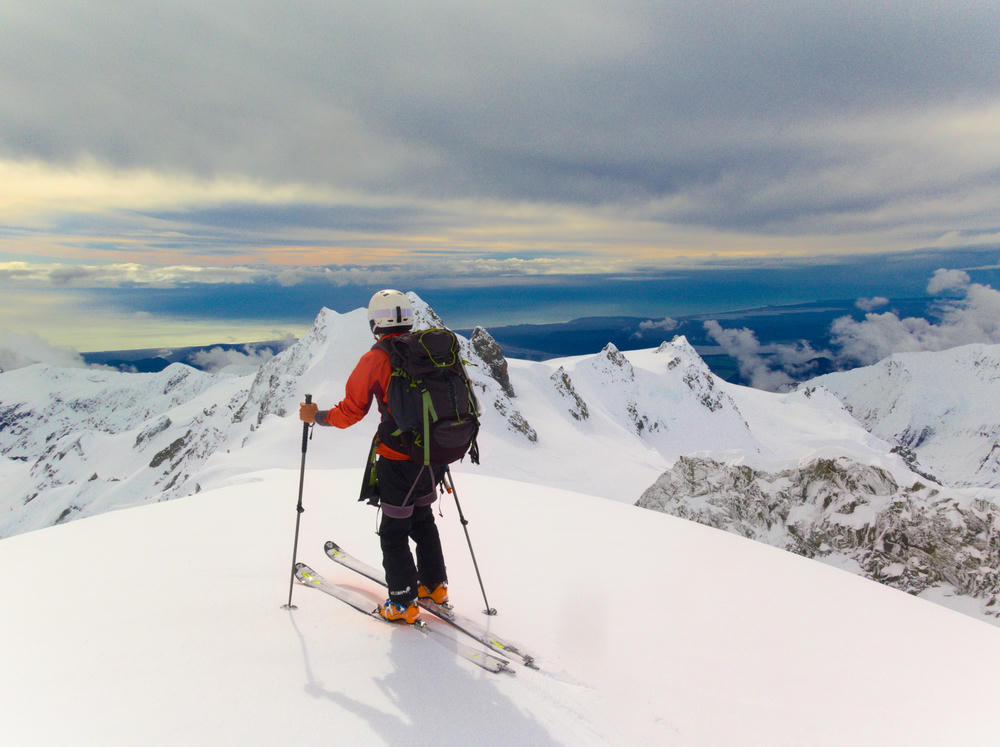
We made it back to the hut early, with no acceptable options for skiing out the next day we attempted to fly out that evening from the hut, but the cloud closed in, necessitating us to fly out in the morning of Day 8. Of course we wouldn't complain about spending another beautiful evening and morning up there in that special place.
During the trip I tried to make a habit of provoking discussions about the conditions each morning, and I think we all did very well performing our tranceiver checks, and talking about our decisions and plans. It was a very satisfying trip in this regard. The main take-away for me was that we needed 1L more liquid fuel for melting snow! We took 1.8L for Soto stove and two butane gas bottles. Thankfully the guide from Aspiring Guides allowed us to use his spare fuel from their trip.
I made a short film about this trip: Fox and Franz Josef Ski Mountaineering - YouTube.
West Coast Glaciers Trip Map
Rough map of where I travelled. Guillaume and Jack also went into the Melchior and Spa Glaciers
Guidebook References
- Backcountry Ski-Touring 2018 - Pages 125-136
- Aoraki Tai Poutini 2018 - Pages 284-339
Conclusion
So, I don't know when I will next be back in New Zealand. I love this place, and the mountains are incredible, the people are friendly and adventurous. The hiking through the trees and rivers up to the snowline on some trips just adds to the overall feeling of wild, challenging adventure. There are still many ski objectives I'd like to try there, especially Mt Aspiring and Elie De Beaumont, maybe next time!
